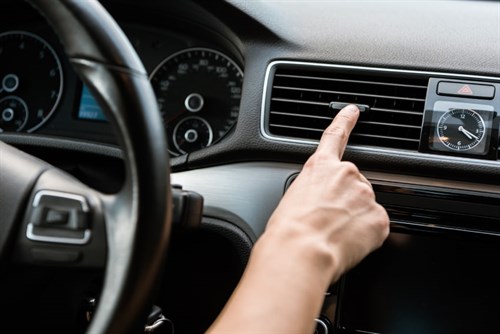Beat the Heat: Troubleshooting Your Car’s Hot Air Woes
Imagine this: you hop into your car on a scorching summer day, yearning for a cool blast of air conditioning. But as you turn on the AC, you’re met with a disappointing wave of hot air. Don’t despair! Understanding common causes behind a malfunctioning car AC and potentially fixing them yourself can save you time and money. This comprehensive guide equips you with the knowledge to diagnose the issue and troubleshoot your car’s AC system, potentially getting you back on the road to cool comfort.
Disclaimer: While this guide provides helpful information, attempting complex repairs yourself can be risky. If you’re not comfortable performing certain steps, consult a qualified mechanic to ensure proper diagnosis and repair.
Understanding Your Car’s AC System: A Cool Collaboration
Your car’s air conditioning system is a network of components working together to deliver chilled air. Here’s a breakdown of the key players:
- Compressor: The heart of the AC system, the compressor pressurizes refrigerant, a special gas that plays a vital role in the cooling process.
- Condenser: Located in front of the car’s radiator, the condenser acts like a heat exchanger, releasing heat from the pressurized refrigerant.
- Receiver Drier: This component removes moisture and debris from the refrigerant, protecting the system.
- Expansion Valve: The expansion valve reduces the pressure of the refrigerant, causing it to turn into a cold gas.
- Evaporator: Another heat exchanger, the evaporator absorbs heat from the car’s interior through the air passing over its coils. This cooled air is then directed into the cabin.
- Blower Motor: The blower motor regulates the fan speed, controlling the airflow through the evaporator and into the vehicle.
By understanding these components, you can begin to pinpoint potential culprits when your AC is blowing hot air.
Diagnosing the Problem: Why is Your Car Blowing Hot Air?
Several factors can contribute to a malfunctioning car AC system. Here are some common culprits and troubleshooting tips:
-
Low Refrigerant Level: Refrigerant is a critical component that absorbs and releases heat. A low refrigerant level can significantly impair the system’s ability to cool air.
- Signs: Blowing hot air is the most noticeable sign. You might also experience weak airflow or a hissing noise coming from the AC system.
- Troubleshooting: Visually inspecting the refrigerant lines for leaks is not recommended for safety reasons. A qualified mechanic can check the refrigerant level and recharge the system if necessary. Recharging might indicate a leak, so a leak detection and repair service might be needed.
-
Faulty Compressor: The compressor is the engine of the AC system. If it malfunctions, the entire system can shut down.
- Signs: No cool air blowing from the vents is a telltale sign. You might also hear unusual noises from the compressor when the AC is turned on.
- Troubleshooting: Replacing a compressor can be complex and expensive. Consulting a mechanic for diagnosis and repair is recommended.
-
Malfunctioning Blower Motor: The blower motor regulates airflow through the system. If it’s failing, you might not feel any air coming from the vents, even if the cooling process is functional.
- Signs: Weak or no airflow, even with cool air blowing from the vents, can indicate a blower motor issue.
- Troubleshooting: Replacing a blower motor can vary in complexity depending on your car model. If you’re comfortable with electrical repairs, you might be able to tackle this task yourself. Otherwise, consult a mechanic.
-
Clogged Cabin Air Filter: A clogged cabin air filter can restrict airflow, preventing cool air from reaching the cabin.
- Signs: Weak airflow, even with cool air blowing from the vents, along with dust or debris coming from the vents, are signs of a clogged filter.
- Troubleshooting: Replacing the cabin air filter is a relatively simple and inexpensive DIY task. Consult your car’s owner’s manual for specific instructions on locating and replacing the filter.
-
Electrical Issues: Electrical problems can disrupt communication between the AC system components and the car’s computer.
- Signs: Inconsistent cooling performance or a complete lack of response from the AC system could indicate electrical issues.
- Troubleshooting: Diagnosing electrical problems typically requires specialized knowledge and tools. Consulting a mechanic for diagnosis and repair is recommended.
When to Call in the Cool Cavalry: Seeking Professional Help
If you’re uncomfortable attempting DIY repairs, or if the troubleshooting steps above don’t resolve the issue, it’s time to consult a qualified mechanic.






More Stories
Is there a lifetime limit on epidural steroid injection?
What is Section 20 of the Motor Accident Insurance Act (Queensland)?
Where to Watch USMNT vs Jamaica National Football Team